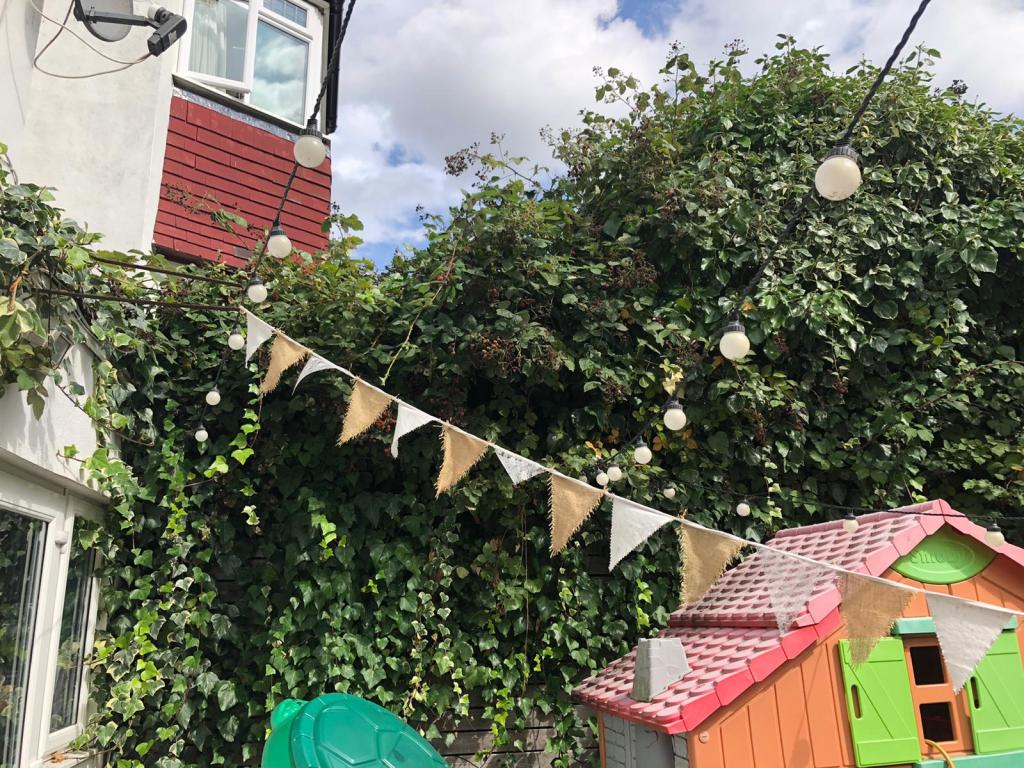
Uncontrollable ivy tree taking up lots of space and creating lots of shade
Short version:
Don’t do it to yourself unless you have to cover something really quickly and have the time to chop it back 3 or 4 times a year… and take the clippings to garden waste because they can’t be composted. Check out some of the other options.
Don’t do it!
Being some sort of edible gardening evangelist, I’ve been in a few people’s gardens to convince them to grow lots of food. I’ve now also cleared out two gardens, to provide more space for growing the things they actually want. In both the main squatter was ivy, which had, in places, grown over itself and pushed out so that there was a crown of green foliage with lots of twiggy and brown growth underneath. Both gardens had walls of ivy 2m thick.
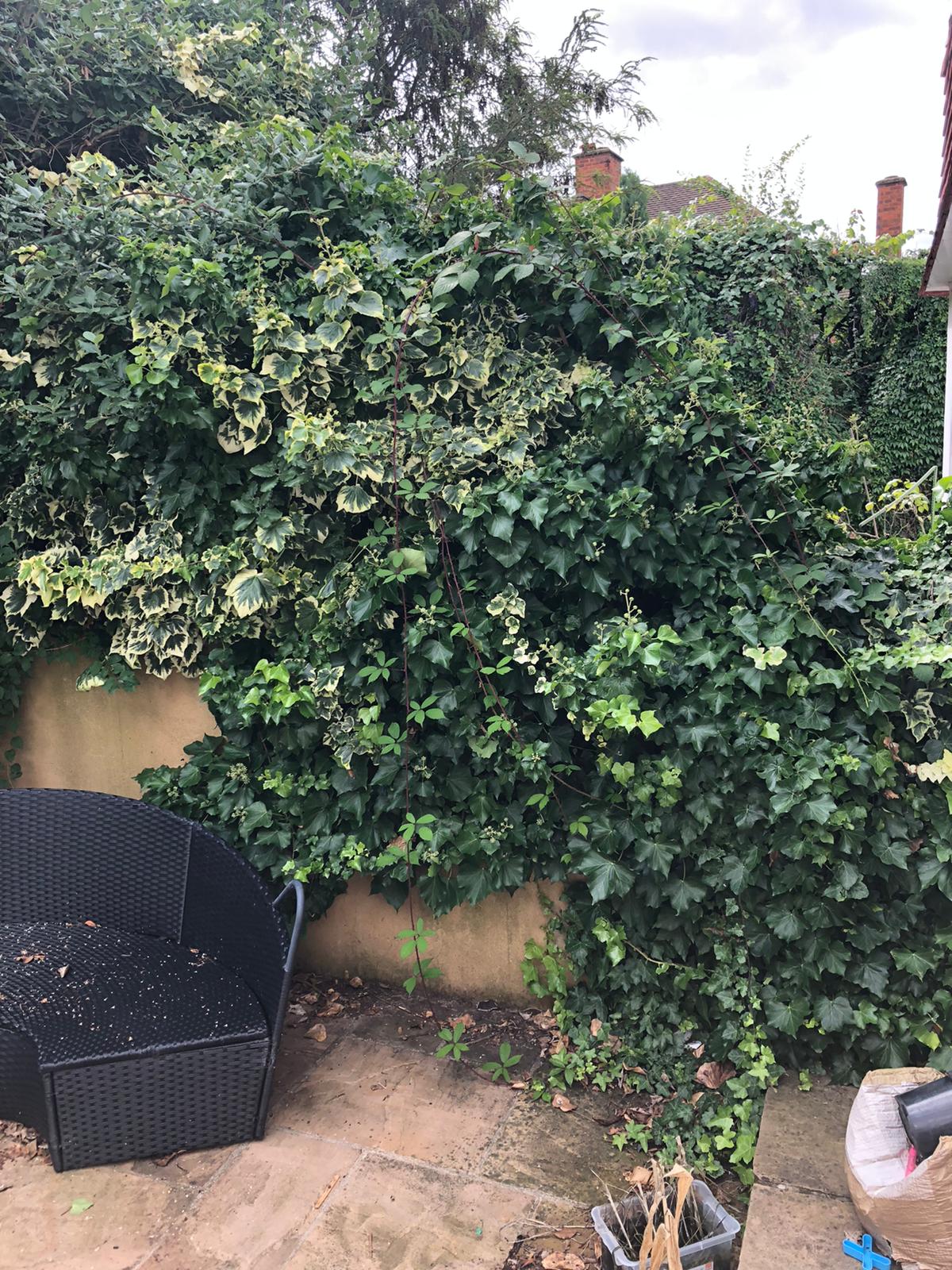
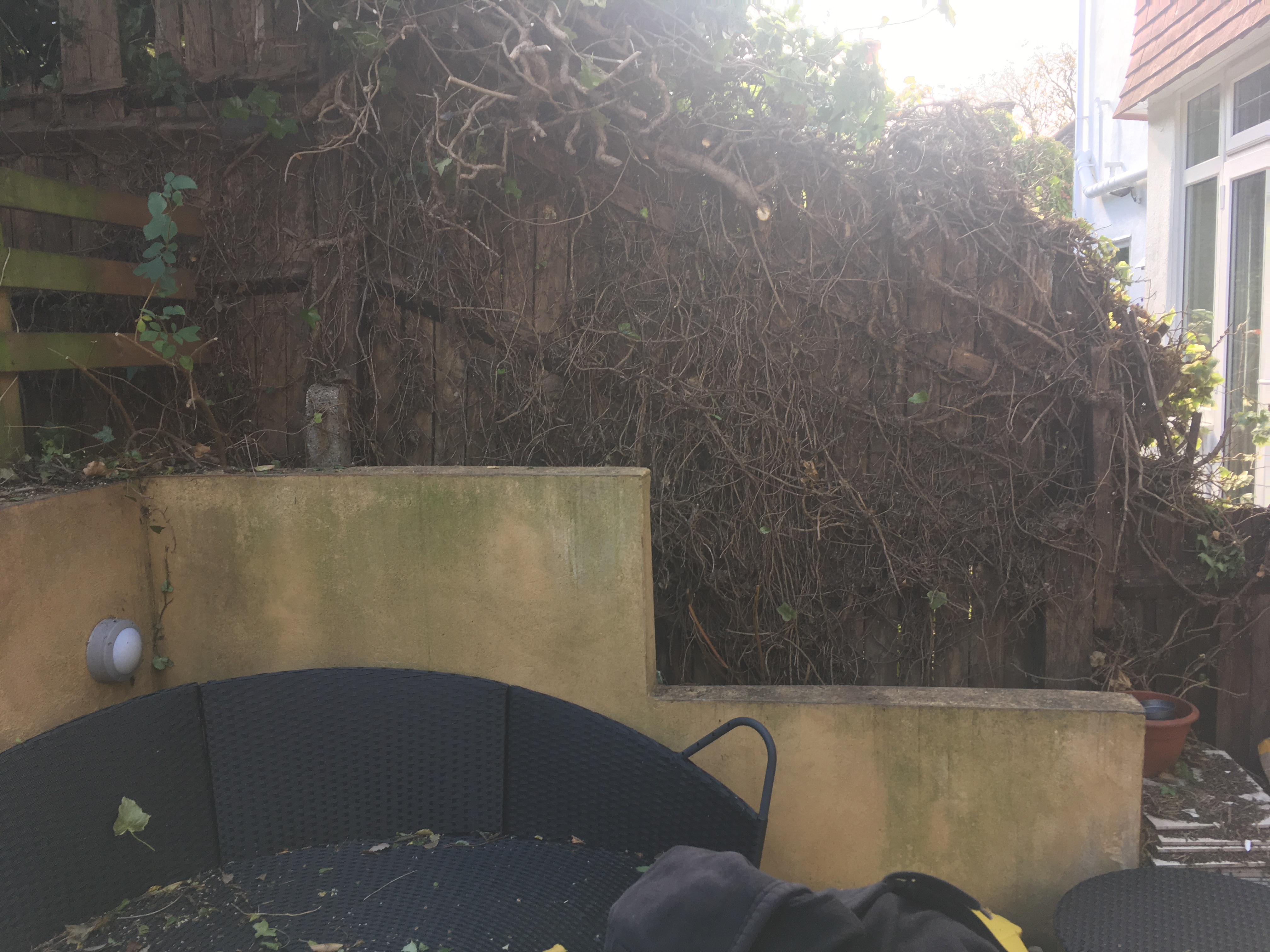
In one garden I had proof the ivy was planted intentionally, not by the current occupier but by a previous one. At the base of an absolutely massive ivy triffid I found a garden centre label. This bush had completely taken over the wooden fence and attached itself onto some trellising above and dug its little roots into the wood of everything damaging it. The weight of the ivy plus the weakening caused by the roots had caused this fence to bend and then the trellis attached to topple. The neighbour there also said that it had invaded her garden and she had been battling it for years.
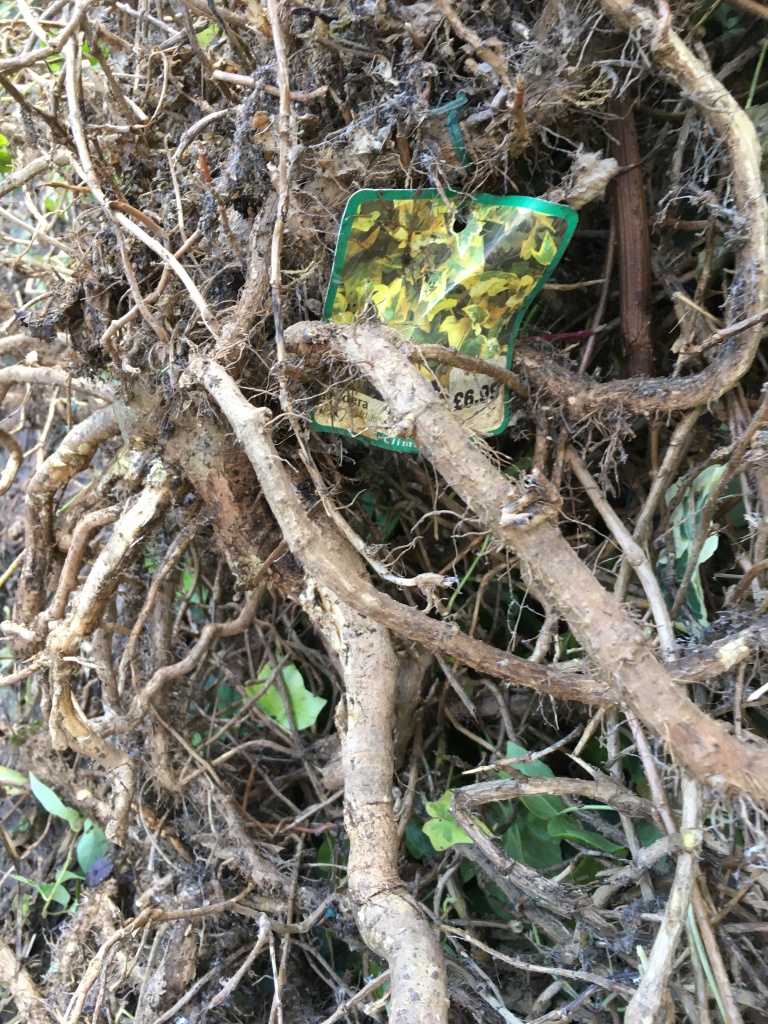
Why?!?!!? 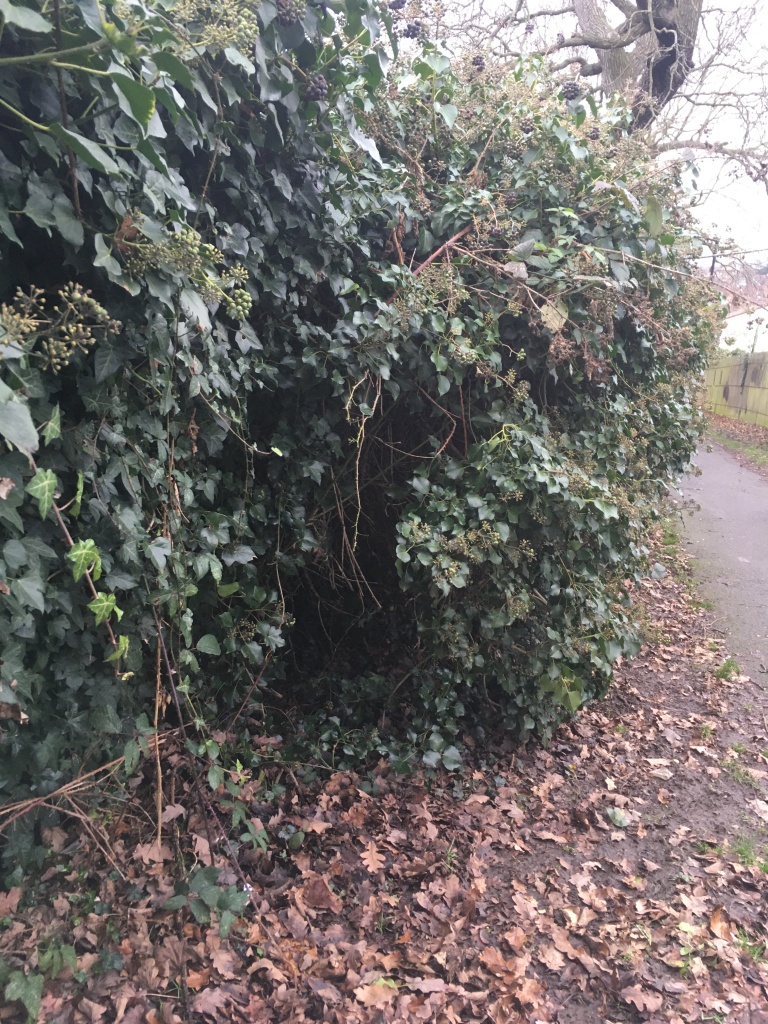
ivy sticking out almost 2m from a fence in an alley 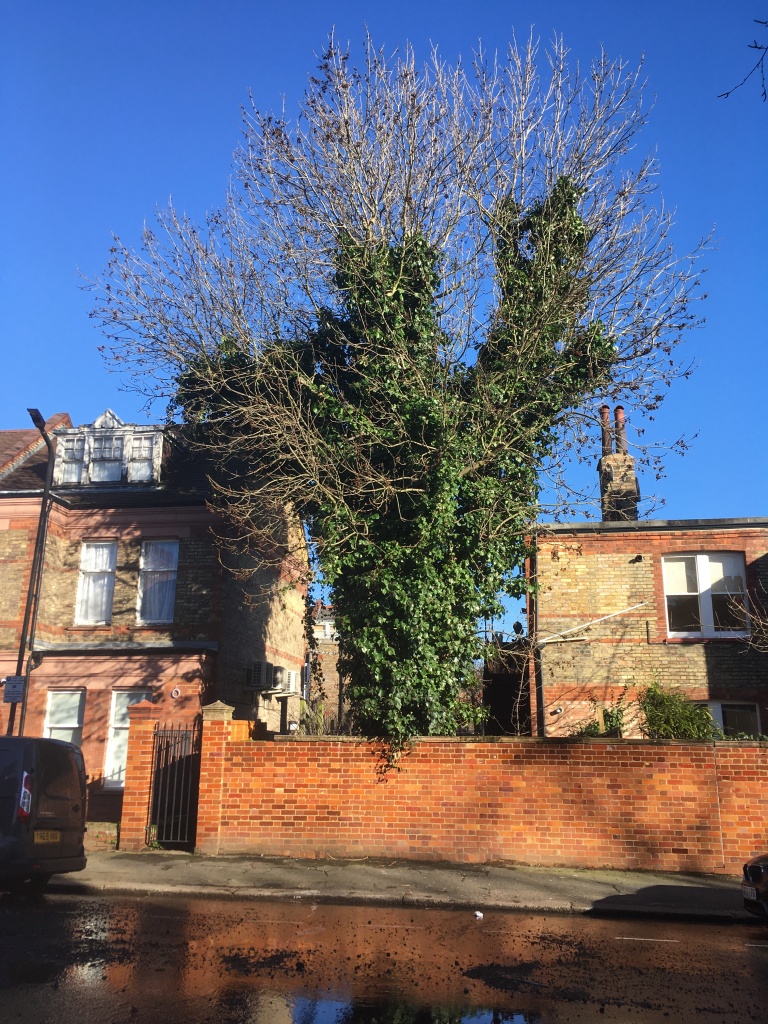
Luckily this tree is healthy and the ivy doesn’t shade the top yet.
Many people plant ivy to cover something unsightly, quickly cover a fence, to add green to their garden quickly or to create privacy. Yes, it does do all these things very quickly but it’s worth considering that ivy grows quickly and CONTINUES to grow quickly. Once it has covered your desired area there is very little to stop it continuing to cover every available surface. Ivy is very tenacious. It propagates very easily. Anywhere that Ivy touches soil it can establish deep roots and start a new plant. These deep roots also make it very hard to pull it out. If you are unlucky enough to have lots of neglected ivy running along bare soil you may find that it is anchored itself in many places. Ivy also places its roots very close to structures such as walls, fences, trees and bushes which makes their roots very hard to remove. The fusing of the roots to wood or other plants means that digging out their roots sometimes causes damage to things that you’re trying to save. Ivy can damage brickwork and can weaken structures. It can also kill weaker trees as the aerial roots damage bark allowing insects and disease to enter and where the ivy completely covers the tree, the tree is in too much shade to photosynthesise well. You do sometimes see dead trees smothered with ivy. It’s ability to cover the ground also kills many other species of plants as they can’t compete, reducing diversity.
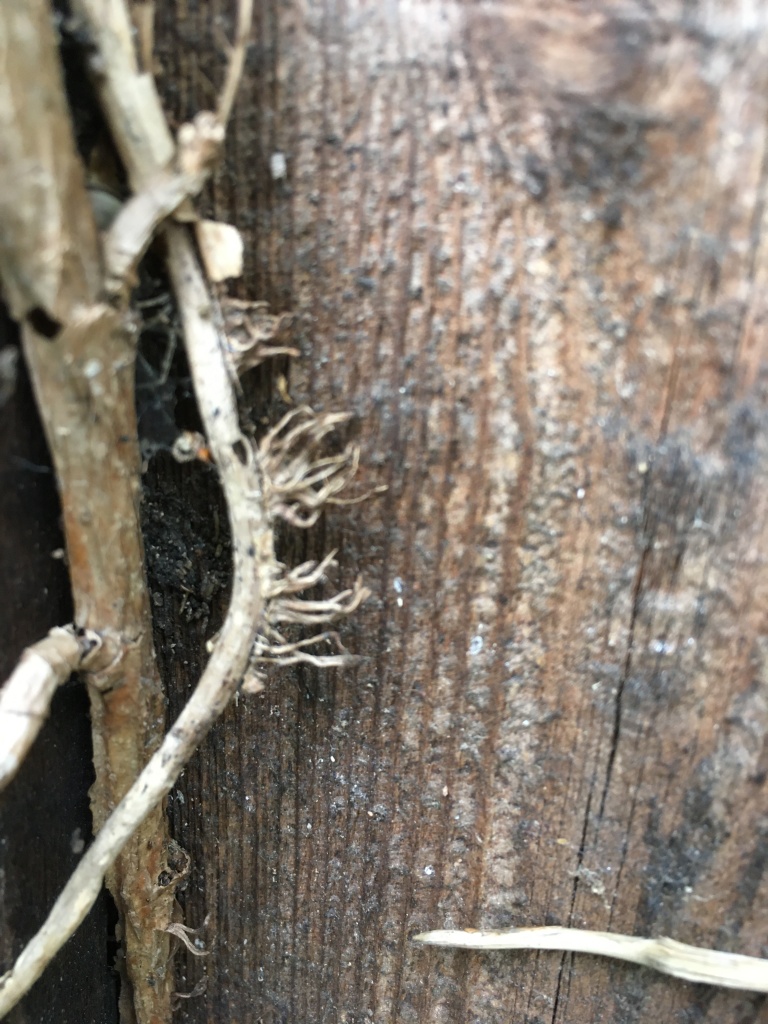
the tiny aerial roots that burrow 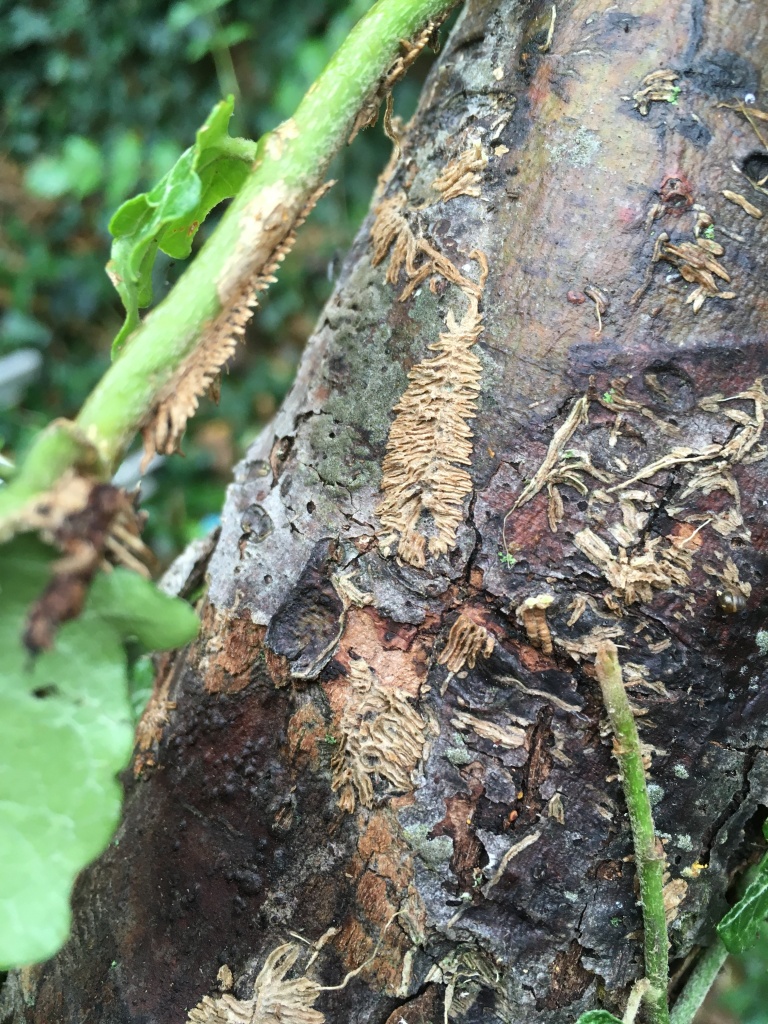
removal needs to be done carefully 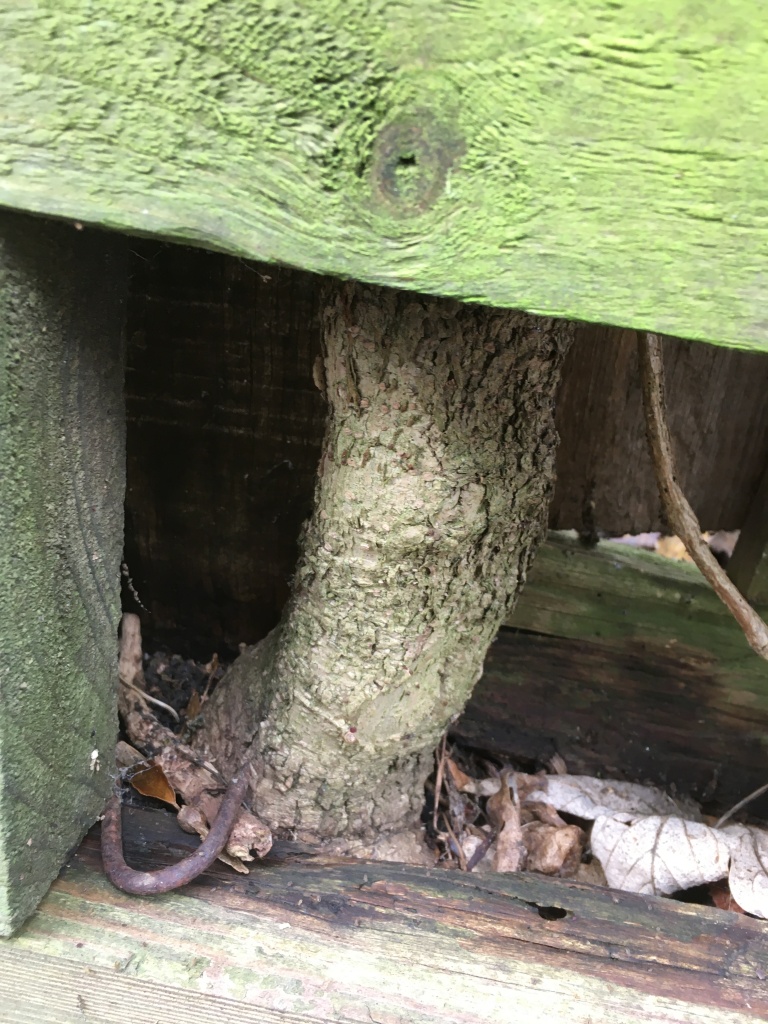
these stems can get very thick over time 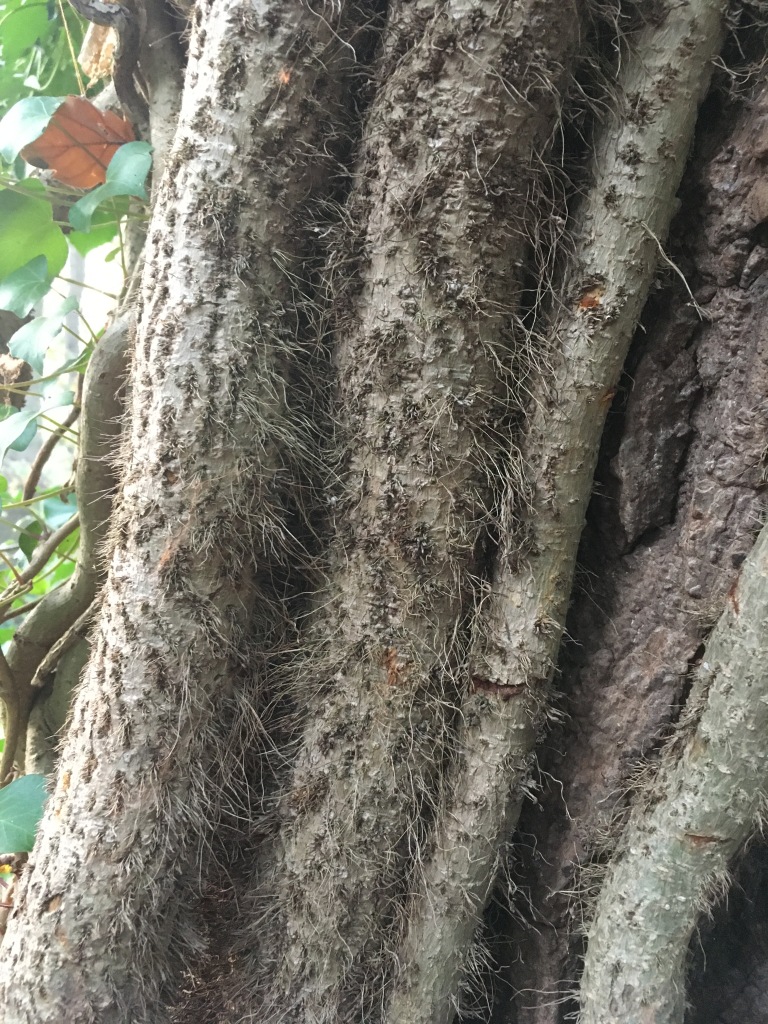
As thick as an arm at the base of a tree 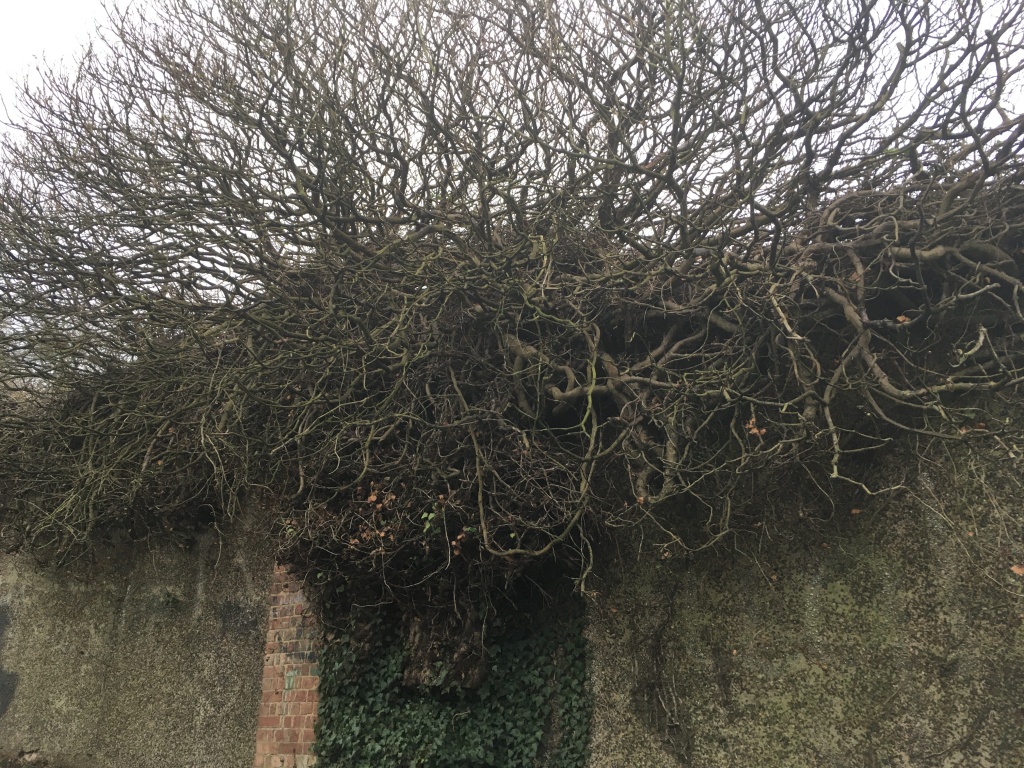
The ‘trunk’ of this has been cut, but it’s coming back and there is much dead wood that needs to be removed.
Why you maybe might
It’s not all terrible though. As previously stated, it does cover something quick with plenty of green with little input from gardeners. Ivy also tolerates shade well. It also comes in lovely, variegated forms. Birds can nest in its dense network of his stems and the berries also provide wildlife with food. Ivy also sucks up plenty of carbon dioxide and gives out oxygen during photosynthesis. I’ve also read that because ivy has a very large surface area (lots of foliage) it does mean it traps some of the pollution particulates well, which then get washed down to the soil when it rains. The dense foliage can also form a physical barrier between the pollution of roads and homes. In a city like London, having bare surfaces covered in ivy to remove some of the pollutants and greenhouse gas and provide more oxygen is a good thing.
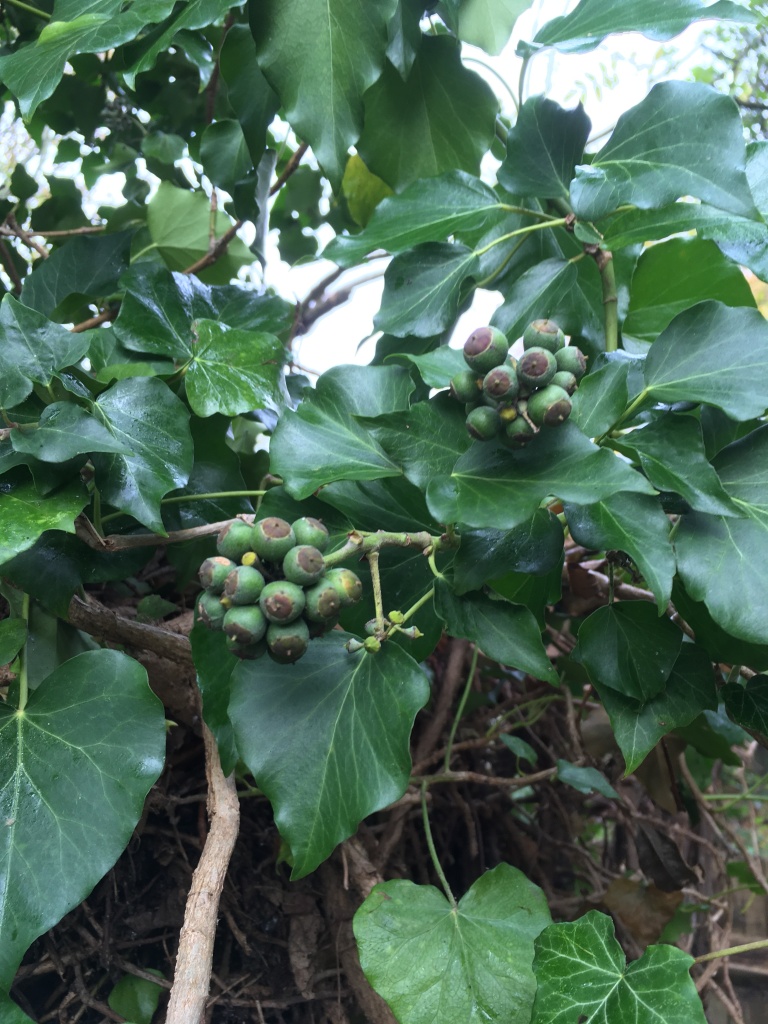
berries 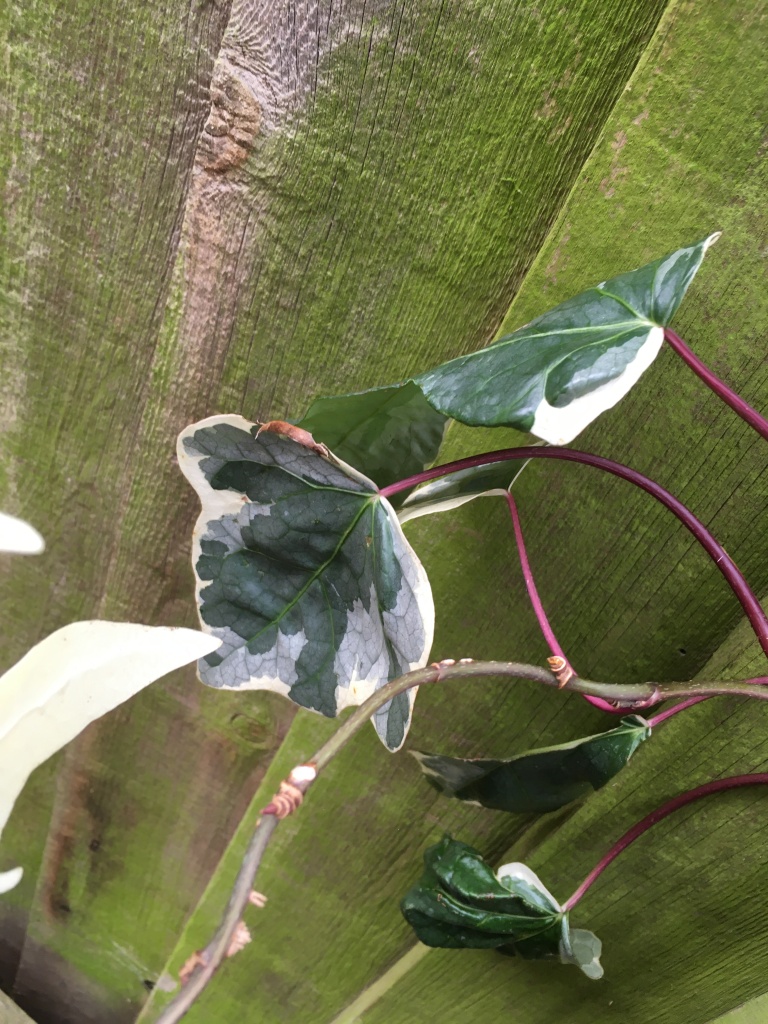
variegated
Alternatives
As with many things there are both positive and negatives. I would only ask that you consider the future when planting ivy. If you do not have the time to maintain and cutback ivy regularly it can very quickly get out of hand. You would be better off planting something slower growing that doesn’t propagate quite as easily.
Just in case any definitions are needed:
- perennial – grows back every year annual – needs to be re-sown every year
- evergreen – keeps leaves all winter deciduous – leaves drop off
Inedible perennial climber – Star jasmine is an evergreen that covers structures very well and also has beautiful scented flowers. It doesn’t grow anywhere near as quickly and it won’t create new plants everywhere it touches the ground. Star jasmine is not edible but grows well in the shade. There are other beautiful and/or scented jasmines, clematis and honeysuckles that are semi evergreen. These are also not edible and need more sun than the star jasmine. None of these burrow into brickwork, fences and trees so you won’t have to deal with the damage after. This does mean that you do have to provide something for them climb but they won’t make a nuisance of themselves and, in my opinion, they are all much more beautiful.
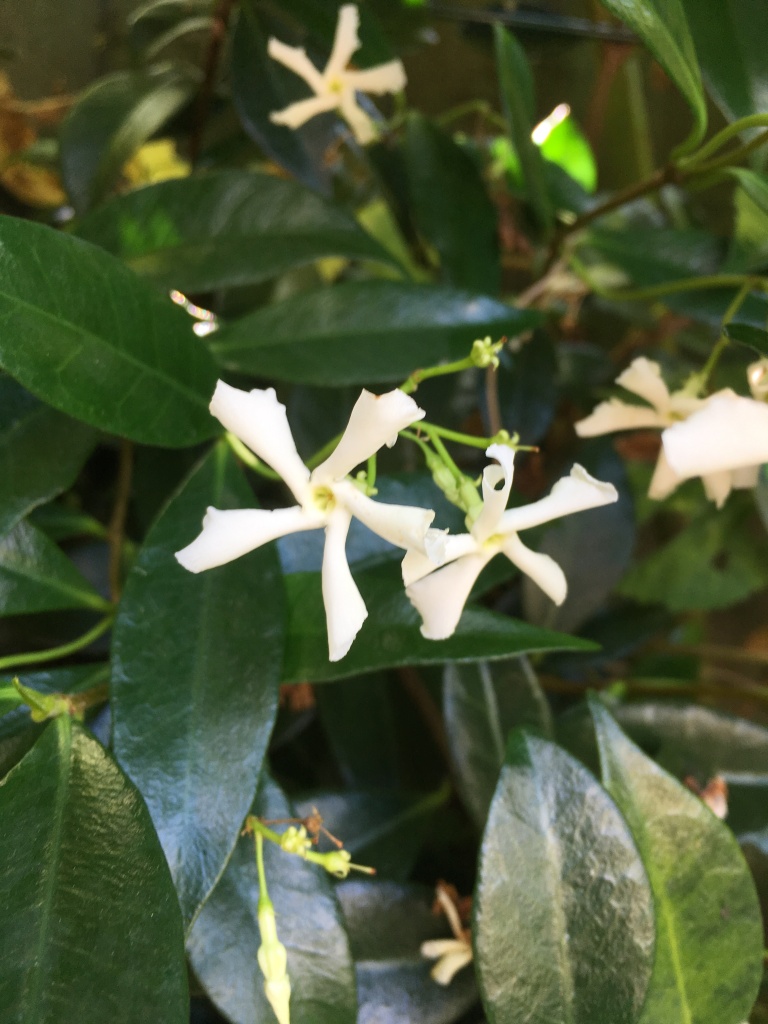
star jasmine 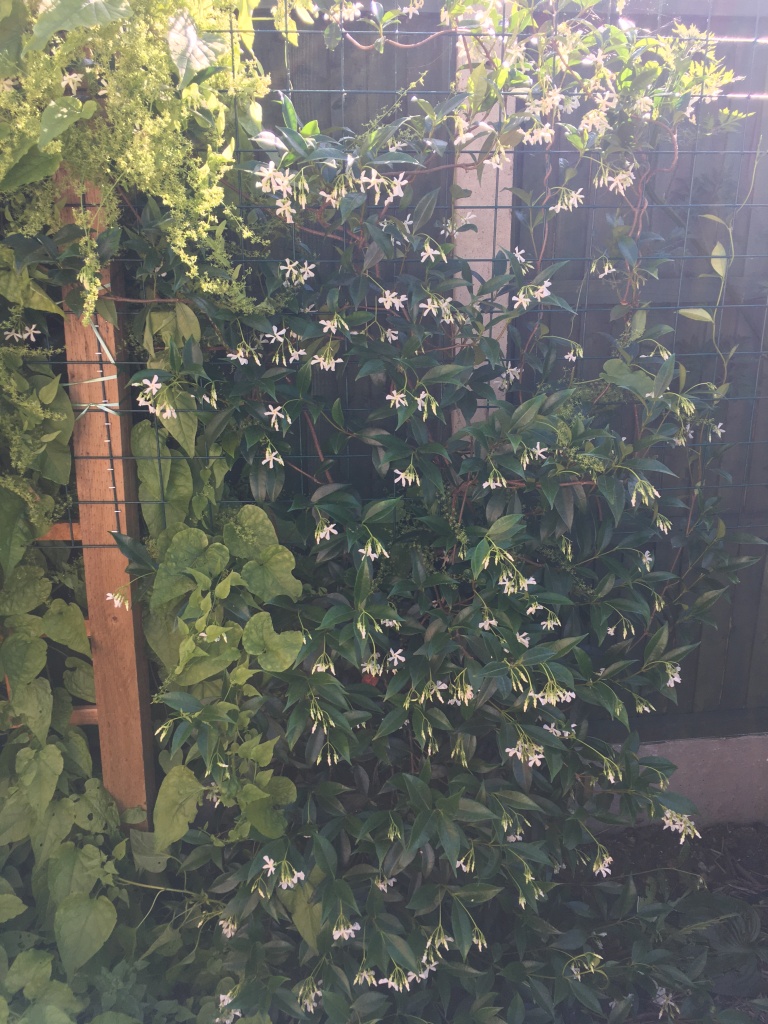
star jasmine at 2 years old 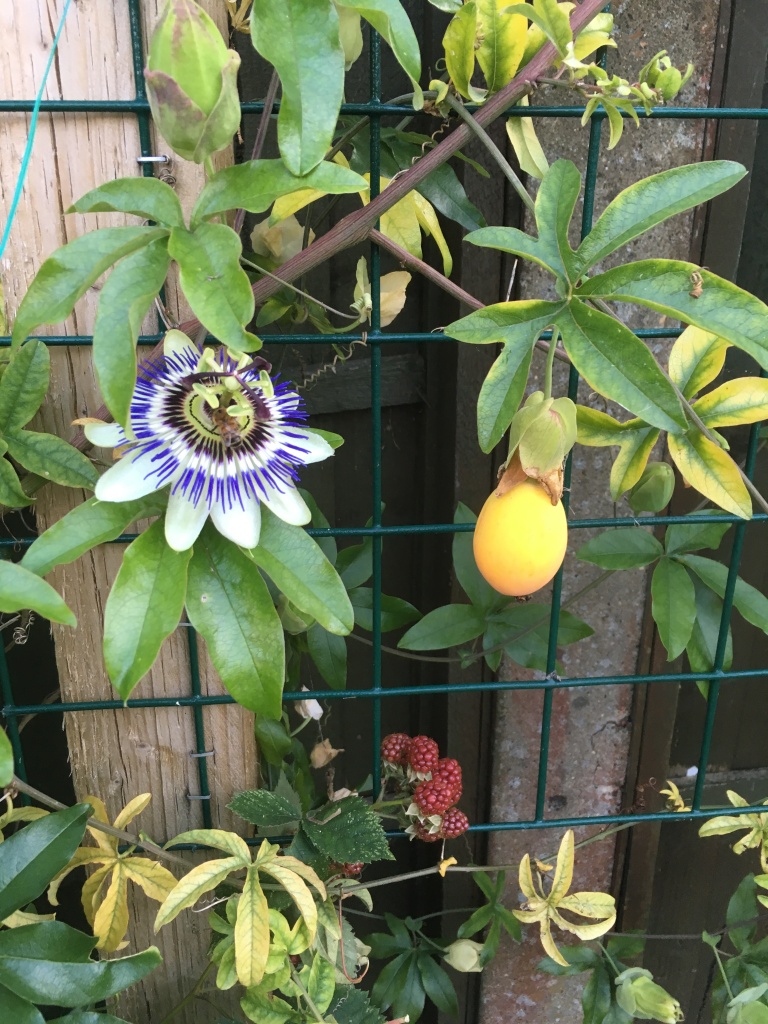
passiflora caerulea
Fast growing evergreen perennial climber with edible bits – If you want something quick passion flowers can be evergreen and the Passiflora caerulea, if grown in a sunny spot, can also produce bright orange fruit with edible seeds. Beware, though, as all other parts are toxic. It will cover something quickly and so need cutting back regularly. They use curling tendrils to cling so it’s easy to remove large sections of it. They don’t burrow into structures and they don’t propagate so easily too. Passiflora provide beautiful flowers and have plenty of leaf mass to suck up carbon dioxide. These need good sun though.
Perennial deciduous edible vines – Kiwi or grape vines are much slower growing than ivy and they do go completely bare over winter, but you could grow a green screen over the warmer months (when you’re more likely to be outside anyway) that has lovely edible fruit. They do need lots of sun and kiwis grow better in acid soil. If you want a vegetable – Caucasian spinach is a vine with edible, spinach like leaves and shoots. It isn’t technically deciduous as the whole thing dies back every year, but it grows very quickly and covers a wall in a season if provided with something to scramble up. It also grows well in shade.
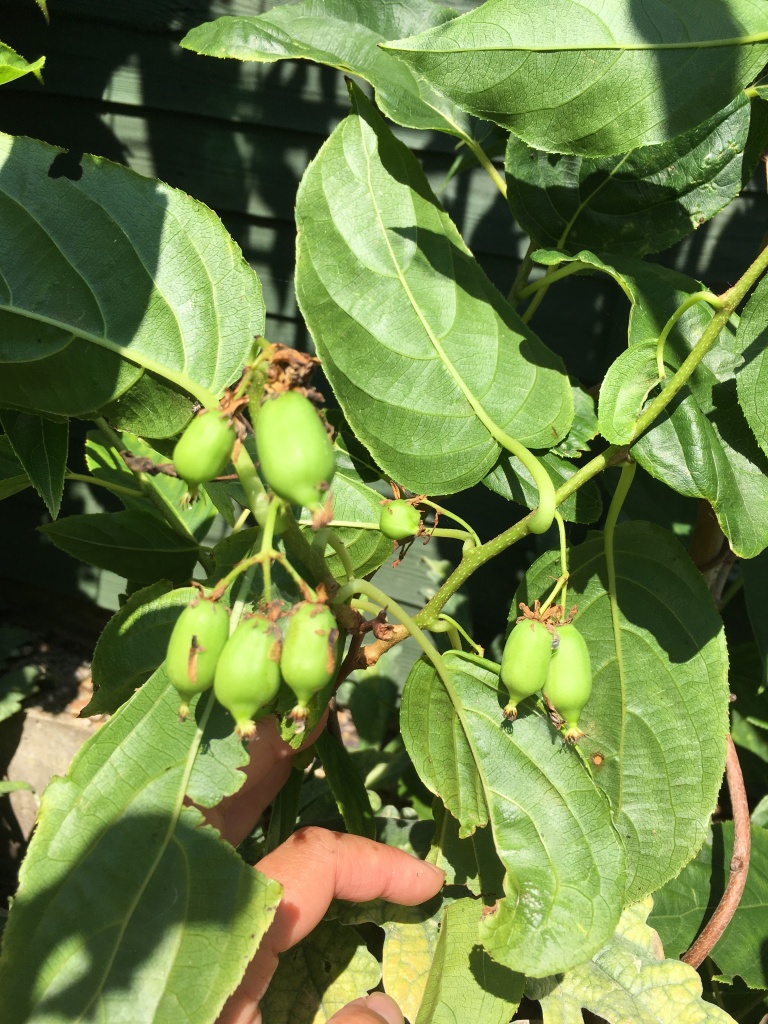
mini kiwi 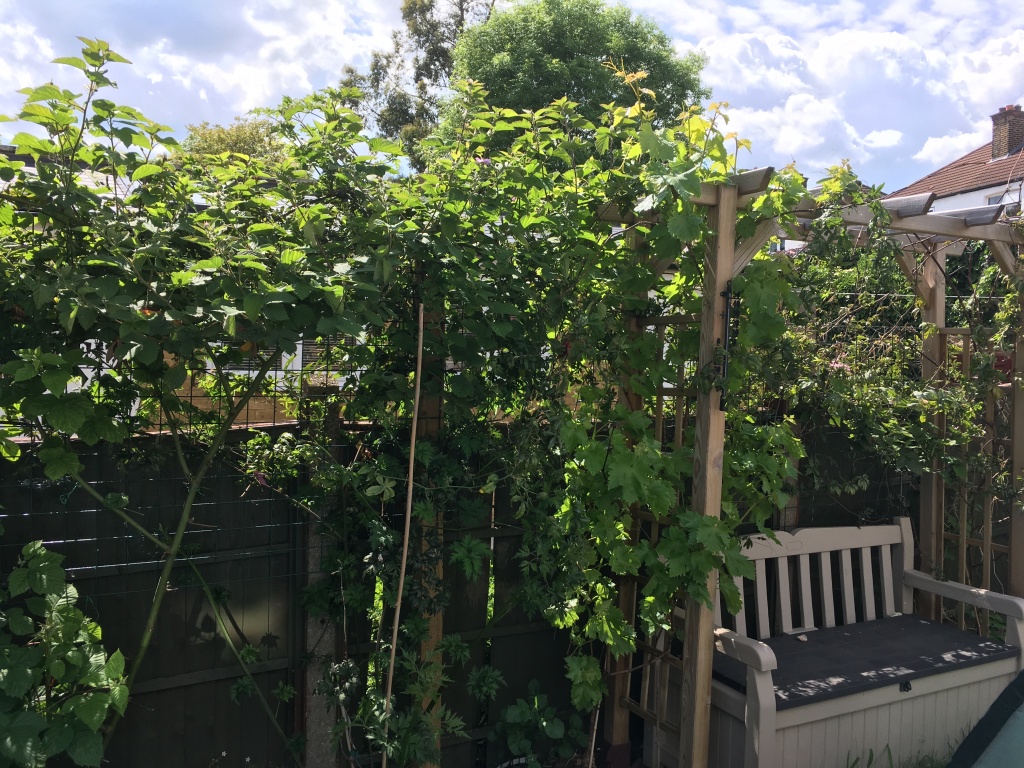
grapevine 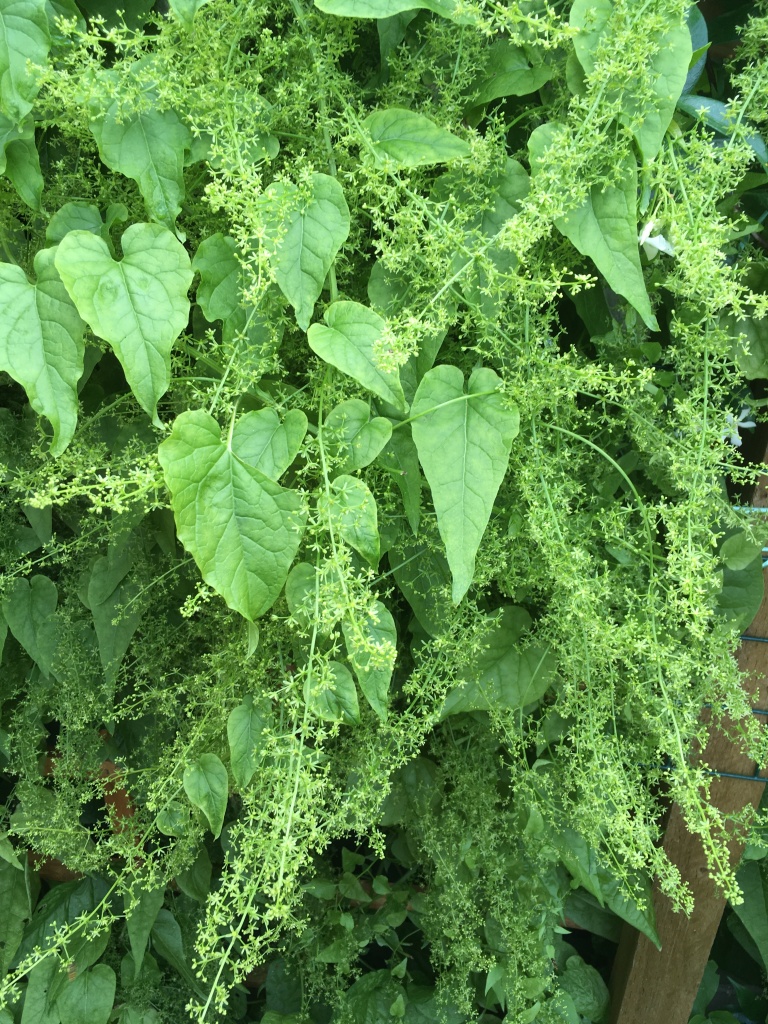
Caucasian spinach
Edible perennial bushes Physalis (cape gooseberry) may keep some green over winter but they provide delicious orange fruit enclosed in papery shells. Physalis can get very large and bushy very quickly and can self-seed. It is much easier to remove than ivy though. Chilean guava is evergreen but slow growing so will take a while to establish.
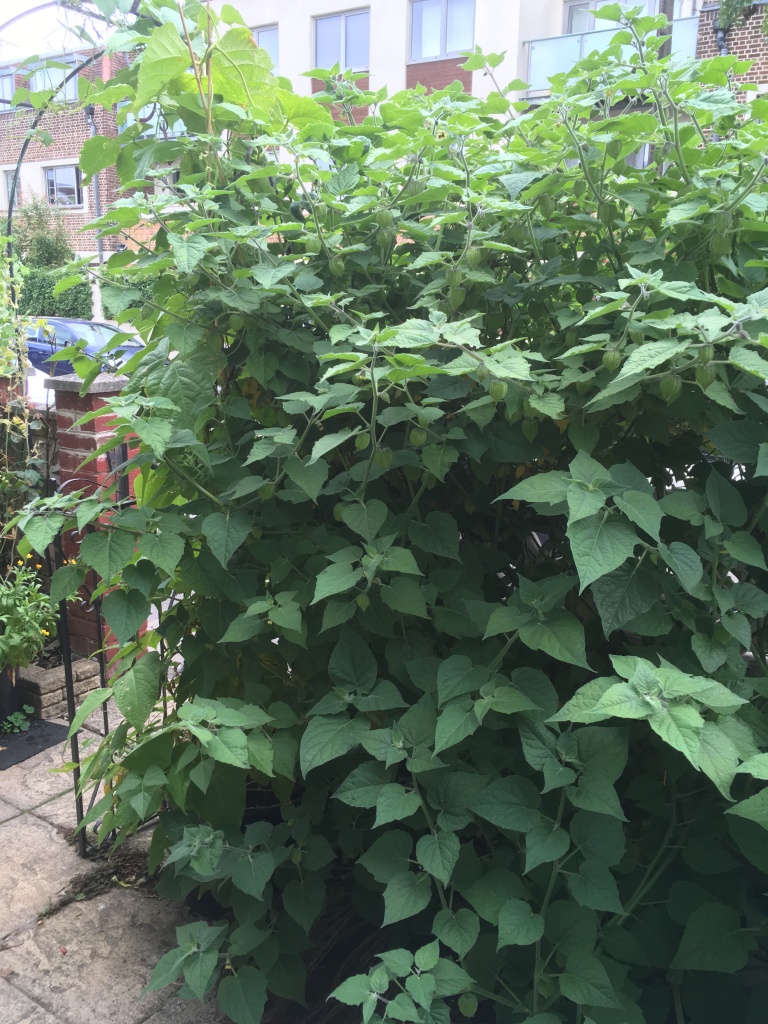
2 yr old physalis bush 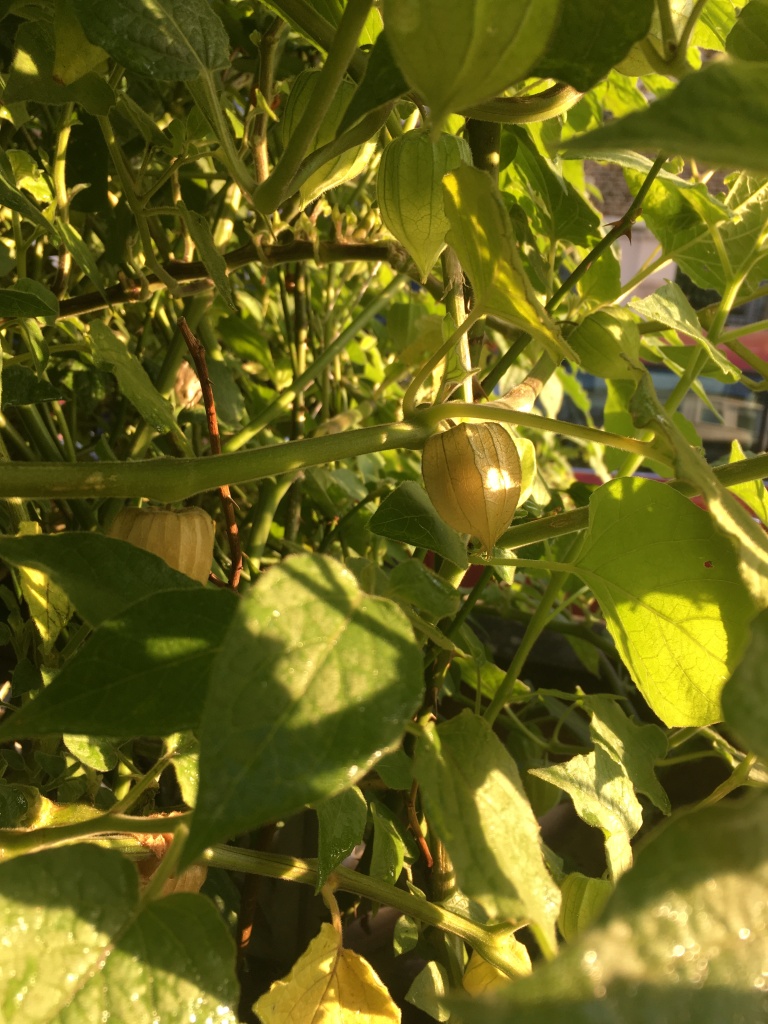
the edible fruit 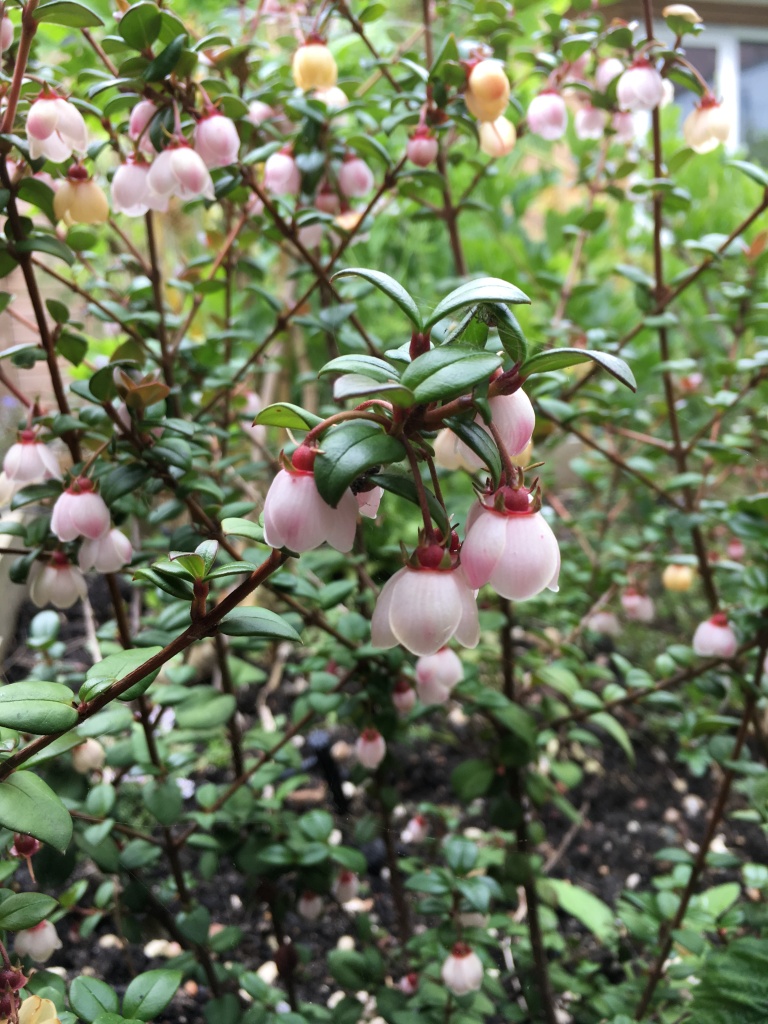
flowers of the Chilean guava
Edible annual – There are plenty of climbing beans and squashes that would cover any support in just a few months and have the bonus of providing you with something yummy in the process. Things like runner beans do OK in some shade. Squashes, sugar snap peas and fine beans need lots of sun. Trailing nasturtiums also climb trellises well and provide edible foliage and flowers.
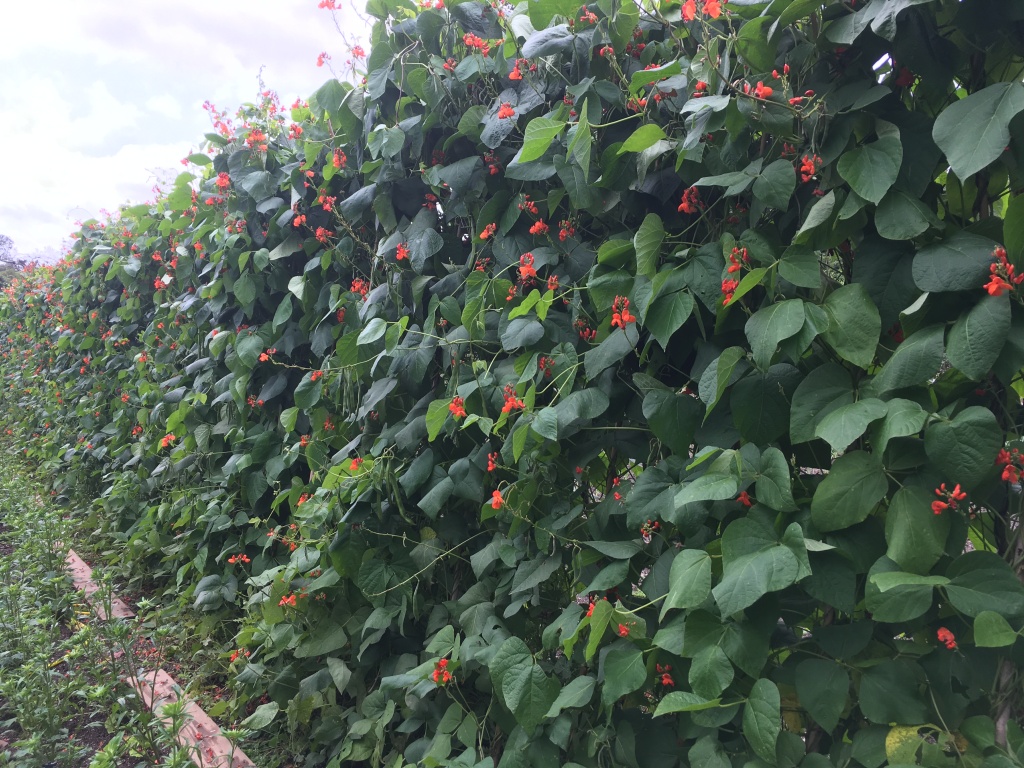
runner bean wall 
squash over a fence 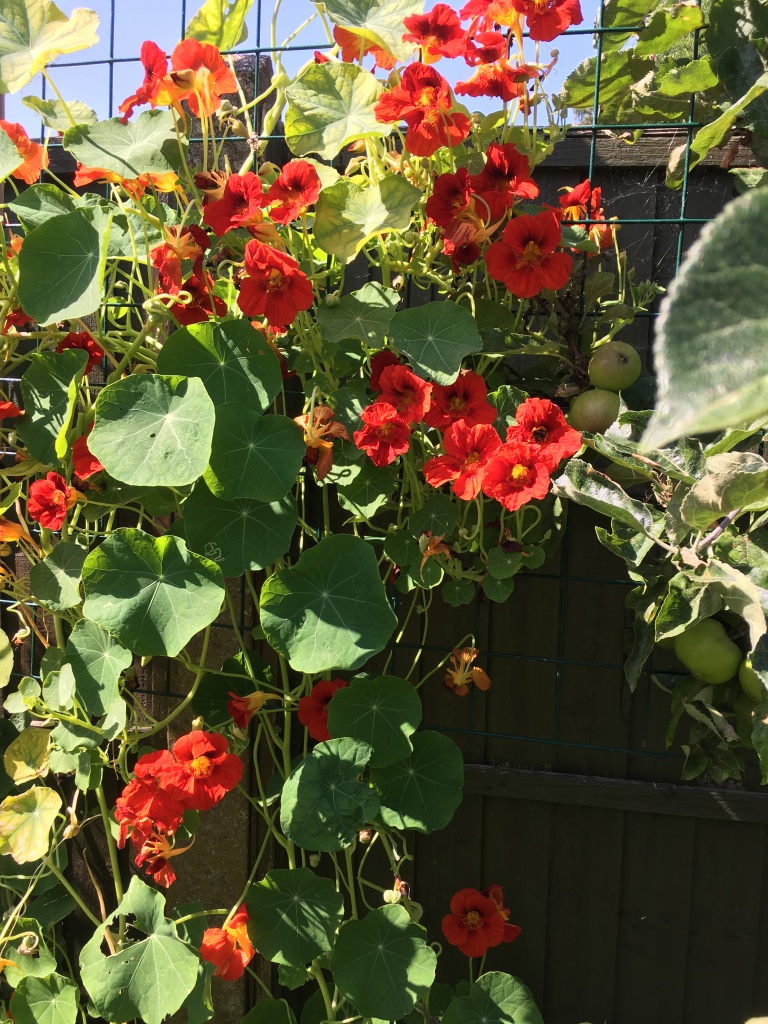
nasturtiums
Hopefully these are some alternatives to planting ivy. Remember that any food you plant in your garden reduces packaging and waste. It can also reduce your carbon footprint.
We needed to plant ivy on our chain link fence at our newly bought home ASAP due to the woods behind the house (heavily shading the fence) and the neighbors kids doing four-wheeling and throwing dust into our yard, pool, and opened sliding glass door. Ivy did its job by making a ‘green fence’ of the chain link but its now trailing up beloved trees that, yes, we have to remove frequently.
I want to thank you for the information on the star jasmine since we have one elsewhere and now I will take some cuttings in preparation for replacing the ivy. Valuable information you’ve provided so I thank you.
LikeLike
Hi Samsara,
Thank you for reading and commenting. It’s lovely to know that this article was helpful. This is a fabulous example of how ivy can be utilised but, as you say, afterwards requires regular maintenance. Good luck with the jasmine. Hope it becomes an amazing, beautiful, scented new screen for you.
LikeLike